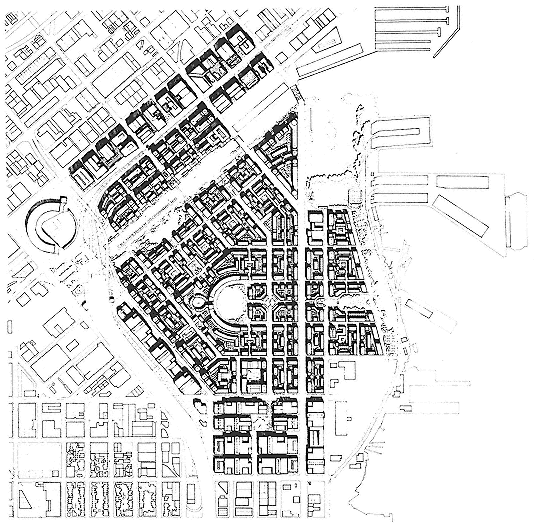Concern for the Broader Public Good
Also suited to the catalytic concept is public concern about quality, costs, and benefits. How will people's lives be enhanced and the efficiency of the urban system improved? Will there be more or better jobs, social services, and housing? Uncontrolled and exploitative urban revitalization rarely produces such positive urban design. The boomtown growth of downtown Austin in the early 1980s exemplifies the phenomenon of land values rising not from need but on the expectation of future need. Raw market forces prevailed in Austin. Opportunities for an improved urban center were lost because sights were set only on profits. Of course master plans and various ordinances can affect "hot" real estate markets, but in most cities these controls at best only moderate excess. They do not necessarily mold positive, publicly beneficial urban design.
Both public and private interests recognize that development does not occur in isolation. There are both direct consequences and side effects. A recent and significant development in San Francisco makes the case. The demand for housing in San Francisco is such that almost any design scheme by Santa Fe Realty for its former railroad yards near downtown (called Mission Bay) could be an economic success, including speculative development to maximize a quick return. The planning and approval climate in San Francisco is stringent, however, requiring a development plan that fits the city and has the blessings of community groups in the area. The strength of the long-term demand encourages the developer to cooperate with the city in producing a plan that has widespread support,

99.
Mission Bay development proposal, San Francisco.
even though it will take longer and cost more. Both sets of interests, public and private, recognize the importance of fitting the development carefully into the physical and social fabric of the city, of moderating and guiding its catalytic impact.
Mission Bay is an opportunity presented by pent-up demand coupled with public controls. Without these controls there is a danger of unmonitored change. The emergence of partnerships between municipal government and private development capital has created opportunities for revitalization that rival historic European partnerships of municipalities and church, trade groups, or national governments. Much redevelopment in European cities could not have occurred without the financial contributions of centralized institutions, first church, crown, and guilds and then central planning authorities. Similarly the redevelopment of American cities requires the involvement of major financing bodies, not as dictators but as an economic engine guided and controlled by broader public interests.